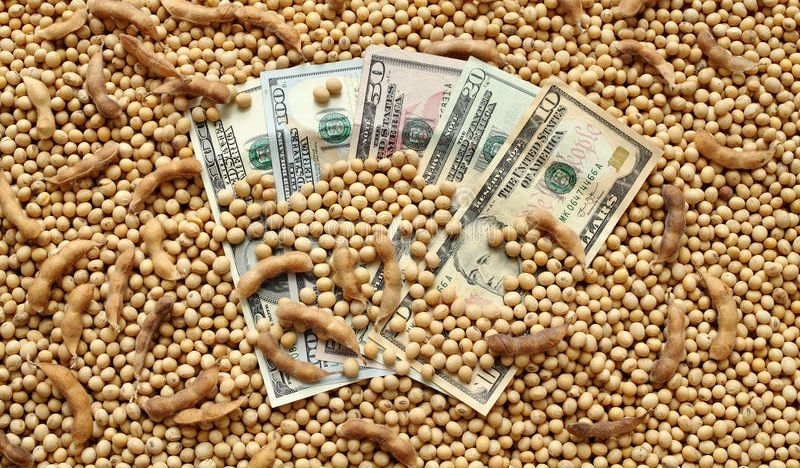Argentina soy dollar scheme unlikely to repeat success

Argentina’s relaunched exclusive dollar rate for soybean trade may fail to boost exports and foreign-currency reserves to the same extent as the first round amid dwindling interest from Chinese buyers and domestic sellers.
The Argentinian government reintroduced the soy dollar scheme in late November in a bid to secure $30bn in foreign currency reserves. The mechanism allows soybeans to trade at a rate of 230 pesos to the US dollar. This is higher than the current official exchange rate of Ps171:$1 but below the unofficial or “blue” rate of Ps311:$1.
The new rate represents a Ps30 increase from the previous soy dollar scheme in September. This was broadly in line with the losses posted by the peso since September, with the dollar then trading at Ps140 and Ps285 in the official and blue markets, respectively.
But the relaunch has been off to a slow start with just 2.98mn t of soybeans trading as part of the scheme since 28 November. In comparison, 8.48mn t traded over an equivalent period during the first round in September.
Soybean sales are unlikely to accelerate until the scheme’s scheduled end on 31 December, participants said, as Argentinian farmers are holding on to their crops or opt for sales to the domestic crushing industry, while Chinese buyers are seeking soy from more competitive origins.
Argentinian farmers have been slow to lift sales, holding on to soybean stocks as a form of hedging against the rapidly declining peso. The official dollar-peso rate firmed to Ps171:$1 from Ps147:$1 at the end of September, with gains in the value of the dollar quickening from a combined Ps36 over January-August.
Farmers have also slowed sales because of falling inventories. China secured 3.8mn t of soybeans as part of the first soy dollar scheme in September, already equalling the volumes that it imported from Argentina in 2021. The latter’s soy stocks have declined sharply as a result.
Argentinian trading firms have also adopted a wait-and-see approach lately, given limited export commitments for the final months of the 2021-22 marketing year (April 2022-March 2023). Soy export registration licences total just 28,000t for December-January, with no volumes registered until May. Prospects of low yields and late harvest amid unfavourable weather have weighed on traders’ willingness to commit for near-term shipments.
And unlike in September, the export market is facing strong competition from the domestic crushing industry, with recovering crush margins — the government lifted the regulated price for biodiesel made from soybean oil in late November — encouraging seed processors to bid at high prices. Concerns over the 2022-23 harvest have also prompted domestic crushers to secure as much supply as possible.
Because of limited supplies for export, Argentinian soybeans are far less competitive internationally compared with the first round. Argentinian crop was offered at ¢310/bu for December shipment at the end of November, in line with offers for soybean from the US Gulf coast (USG). In comparison, Argentinian soybeans were priced at a discount of ¢65/bu to USG-origin crops for October shipment three months ago.
Most Chinese buyers have sought alternative origins, as Argentinian offer levels came above initial expectations for a lower quality crop compared with US or Brazilian products.
Argentinian soy’s protein content comes at an average of 33.3pc, compared with 34.8pc and 35.5pc for US and Brazilian crops, respectively, according to a study by American Oil Chemists’ Society.
As such, crushers must blend Argentinian beans with crops from other sources to produce soymeal with the targeted 43pc protein level. This requires additional steps, including peeling and drying before blend, which imply higher operation costs and consequently further weigh on crushers’ buying demand.
As a result, Chinese crushers stepped up purchases from other origins, securing 30 soy cargoes last week, mostly for near-curve loadings from the US, given falling prices from the origin — from ¢350/bu in mid-October to ¢300/bu currently for January loading.
These purchases are poised to arrive at Chinese ports in January-February amid the Chinese New Year holiday season, more than enough to cover domestic demand, as crushers slow operations during the holiday season. China is unlikely to buy more beans for the shipment period unless there is a sharp drop in prices, indicating a lower likelihood for old-crop Argentinian soybean sales.
For new crops, buyers are anticipating higher supplies from Brazil, in line with record harvest forecasts. Both the US Department of Agriculture and Brazil’s national agricultural agency Conab projected a soy output of 152mn t and 153.5mn t in Brazil, respectively, for 2023-24. Rising supplies could weigh on global soybean prices, discouraging buyers to position themselves for forward purchases.
Meanwhile, US key soybean export season has lasted longer this year, with the recent easing of logistical bottlenecks on the Mississippi river providing a late boost to shipments. This points to a possibility of increasing US soybean supply in coming weeks, discouraging crushers from purchasing Argentinian beans.
Read also
Wheat in Southern Brazil Impacted by Dry Weather and Frosts
Oilseed Industry. Leaders and Strategies in the Times of a Great Change
Black Sea & Danube Region: Oilseed and Vegoil Markets Within Ongoing Transfor...
Serbia. The drought will cause extremely high losses for farmers this year
2023/24 Safrinha Corn in Brazil 91% Harvested
Write to us
Our manager will contact you soon



